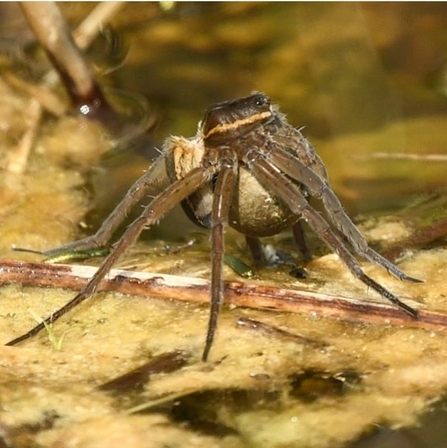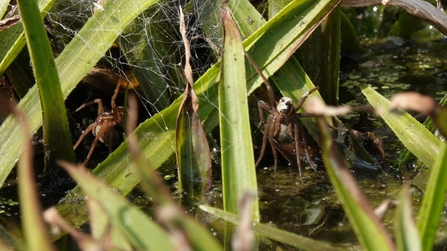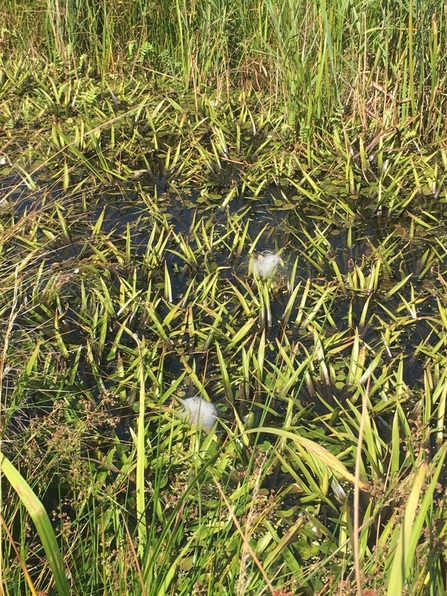The fen raft spider is one of the rarest spiders in the UK, only known to occur naturally at three sites, including at our own Redgrave and Lopham Fen, the Pevensey Levels and a canal in South Wales. However, since Dr Helen Smith started a translocation project in 2010, the species can now be found at Suffolk Wildlife Trust reserves Carlton and Castle Marshes.
Helen raised young spiders, taken from the natural populations, in her kitchen and then released them onto the marshes which, with their network of dykes with good water quality, diverse structure of aquatic plants and biodiversity of invertebrates, are the perfect habitat for this semi-aquatic spider.



